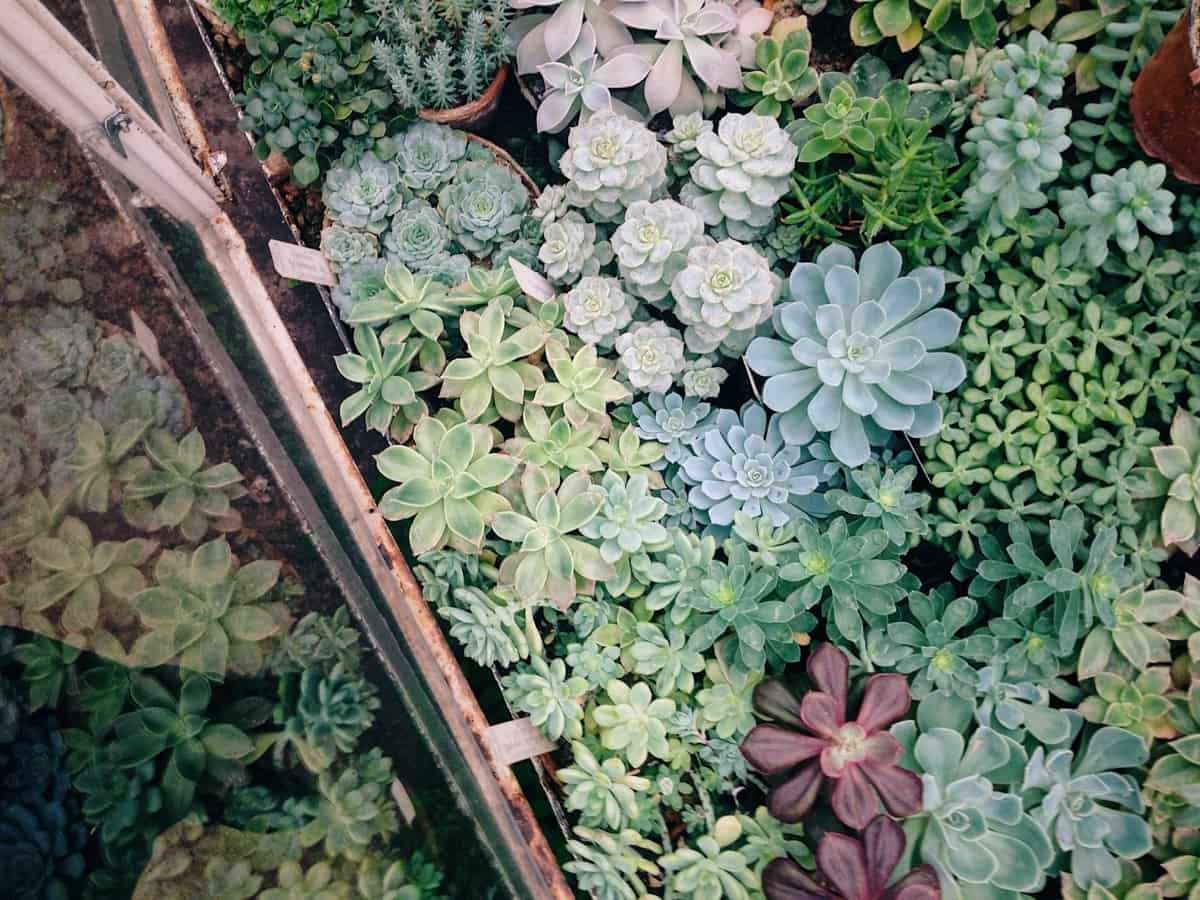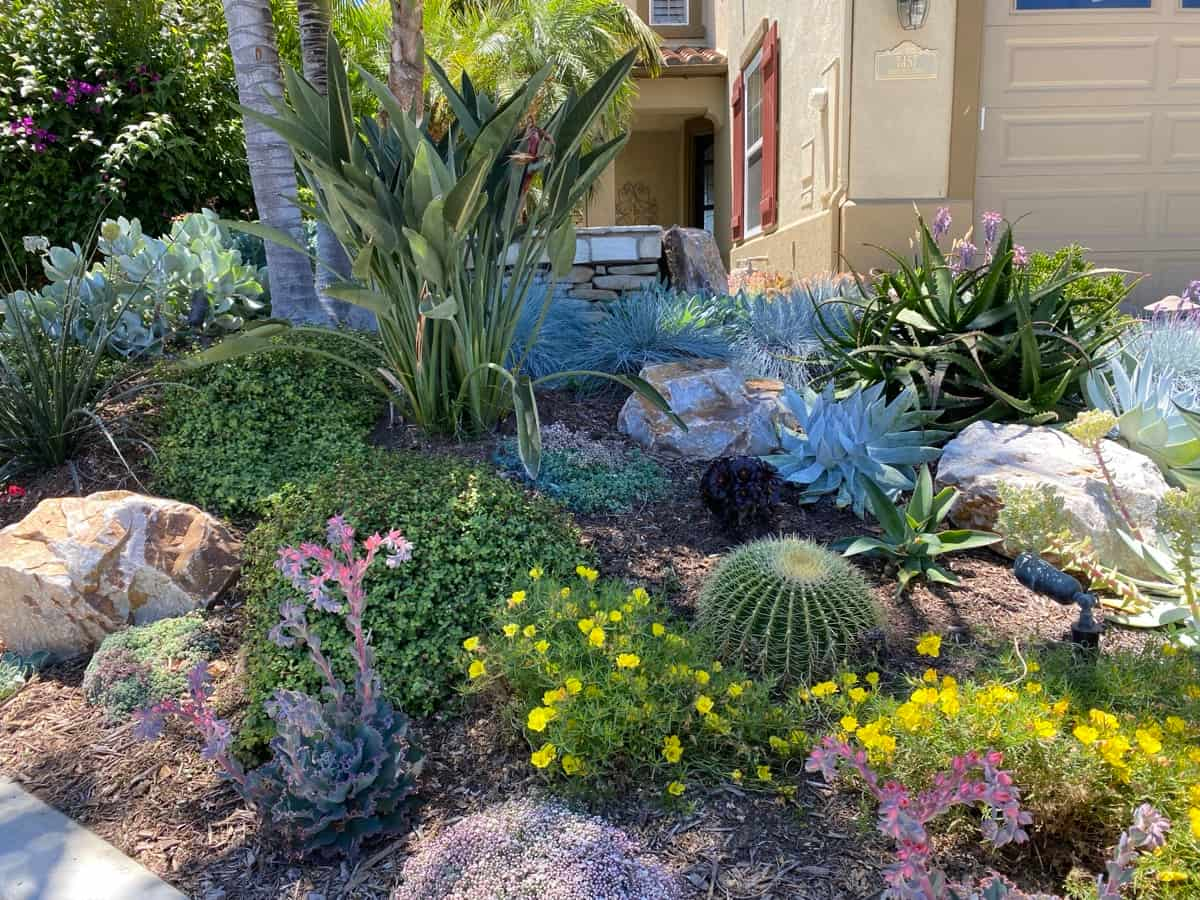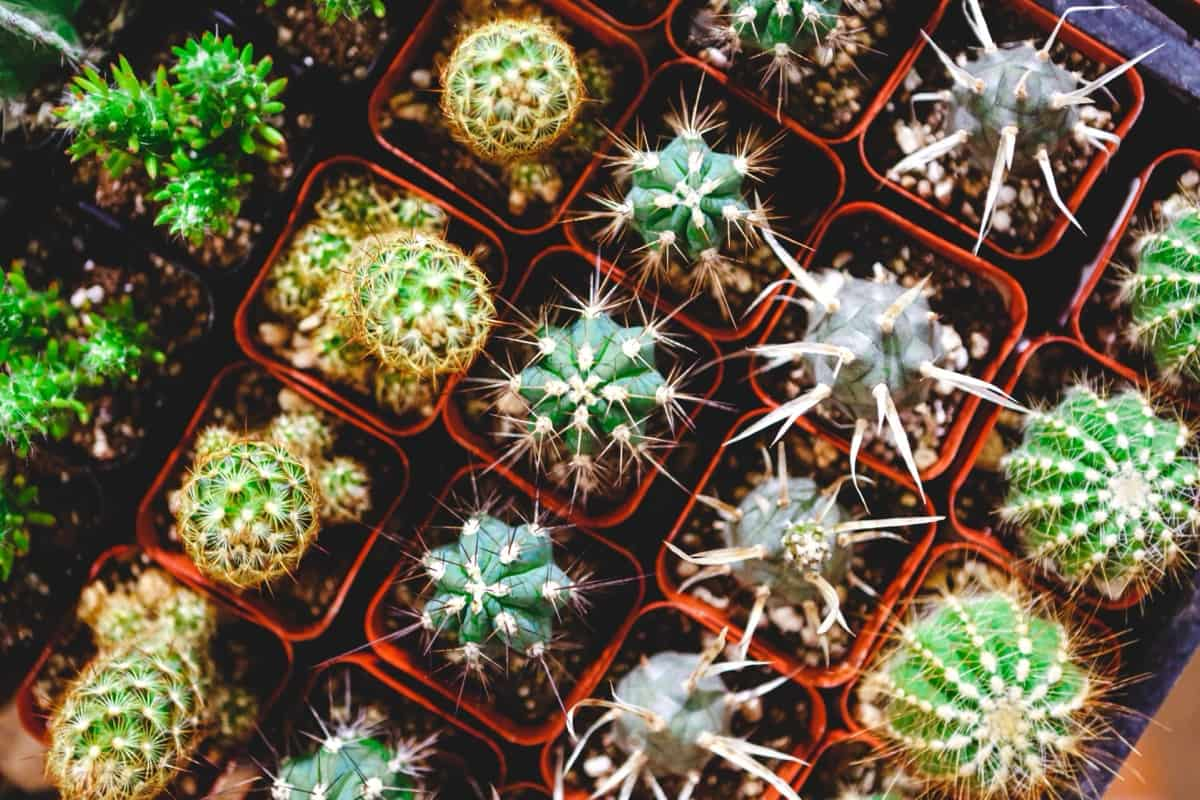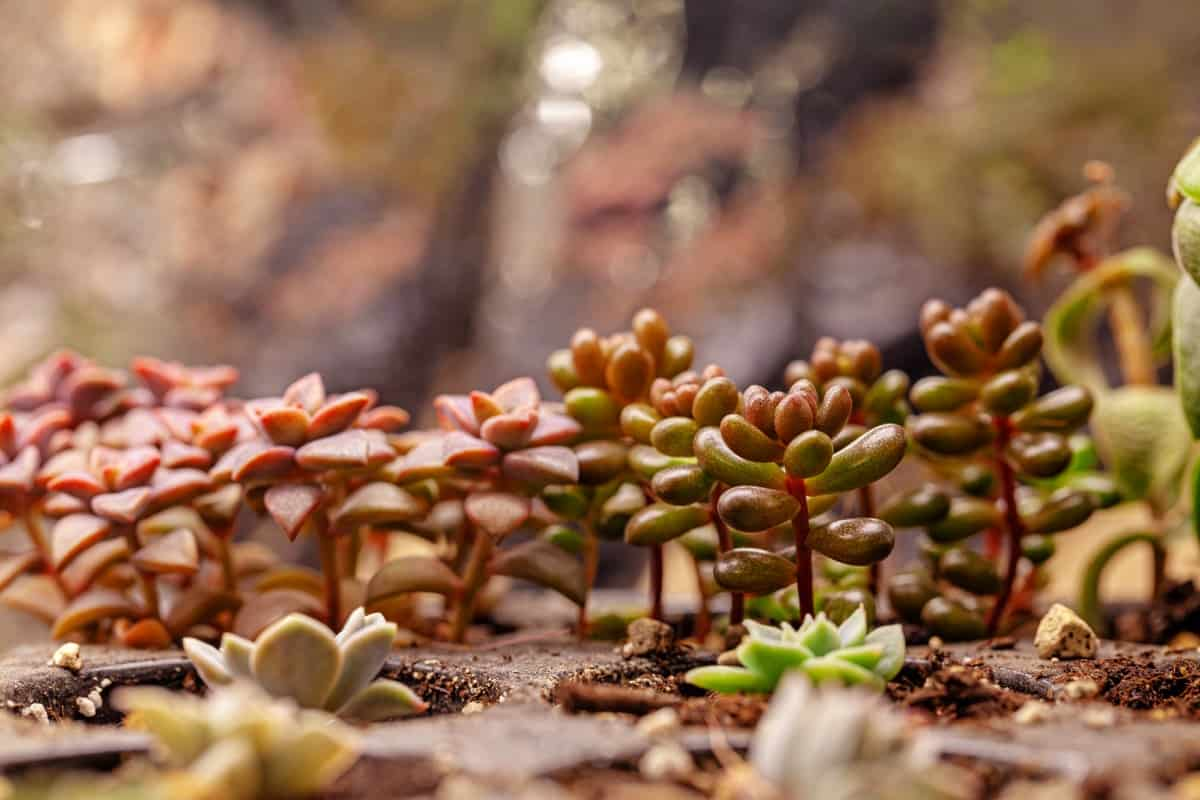Drought-tolerant gardens, also known as xeriscapes, have become increasingly popular due to growing concerns about water scarcity. But what is a drought-tolerant landscape? It’s a landscape designed to thrive with minimal water, particularly in areas where water is scarce. This approach is not just about planting certain species; it involves a holistic methodology that considers the entire garden ecosystem. As the world gets hotter and water gets scarcer, it’s crucial to figure out how to help plants in dry conditions and create landscapes that need less water.

How to Create a Drought-tolerant Garden
Understanding the Importance of Drought-tolerant Gardens
Climate change and increasing water scarcity have made it crucial for homeowners and gardeners to reconsider their garden designs. A drought-tolerant garden doesn’t just save water and reduce the need for maintenance; it saves money and provides a habitat for local wildlife. These gardens benefit the environment, reducing water usage and soil erosion, thus preserving the area’s natural resources. More importantly, such a garden is a testament to sustainable living and can inspire others in the community to adopt similar practices.
Assessing Your Garden’s Needs: Approach to Creating a Drought-tolerant Landscape
Before jumping into plant selection or soil preparation, take a moment to assess your garden’s specific needs. Examine the type of soil you have, the amount of sunlight each area receives, and the natural rainfall patterns in your region. Determine which parts of your garden dry out fastest and which stay moist longer. This assessment will provide valuable insights into designing your garden in layers, with drought-tolerant plants in the driest areas and slightly more water-loving plants in spots that retain moisture.
Selecting the Right Plants for a Drought-tolerant Garden
The cornerstone of a successful drought-tolerant garden is choosing the right plants. Opt for native plants, which naturally adapt to the local climate and soil conditions. Examples include succulents, ornamental grasses, and certain perennials and shrubs. These plants have evolved to survive drought, often developing deep roots to tap into underground water or thick leaves to store moisture. When selecting plants, consider their mature size, growth rate, and water requirements to ensure they thrive with minimal care.
Preparing the Soil for a Drought-tolerant Garden
Proper soil preparation is key to helping plants during drought. Start by improving the soil’s structure. Adding organic compost can increase the soil’s water-holding capacity, ensuring it retains moisture for longer periods. Additionally, ensure good drainage; overly saturated soils can harm drought-tolerant plants. Composting with sand or fine gravel can create an optimal environment. Regular soil tests can also guide you on nutrient adjustments, ensuring your plants remain healthy and resilient.
In case you missed it: 9 Vegetables to Grow with Minimum Water Usage: Suitable for Drought-tolerant and Low-water Gardening

Implementing Water-efficient Irrigation Systems for Drought-tolerant Garden
Even drought-tolerant gardens need some water, especially during their establishment phase. Drip irrigation systems, soaker hoses, or a system of ollas (clay pots buried in the ground) are excellent methods that deliver water directly to plant roots. These systems reduce water loss through evaporation and runoff. To be most effective, water early in the morning or late in the evening when temperatures are cooler. Using a timer or smart irrigation controller can also help you regulate water use, ensuring plants get the right amount without waste.
Mulching Techniques for a Drought-tolerant Garden
Mulching is an indispensable technique for maintaining moisture in the soil. By applying a layer of organic or inorganic material around plants, you can conserve water, suppress weeds, and regulate soil temperature. Materials like straw, bark chips, or decomposed granite can be especially effective for drought-tolerant gardens. Mulch should be applied in a 2-4 inch layer around plants, ensuring it doesn’t touch the base of the plants. As organic mulches decompose, they improve soil structure and fertility, providing a bonus to your drought-resistant garden.
Proper Maintenance and Care for a Drought-tolerant Garden
While drought-tolerant gardens require less attention than traditional gardens, they still need proper maintenance to remain vibrant. Begin by watering newly planted specimens until they’re well-established, gradually reducing the frequency as they mature. Pruning is essential; removing dead or damaged parts encourages healthy growth and air circulation.
Regularly check for pests or diseases; early detection can prevent more significant issues. Opt for slow-release organic fertilizers that won’t harm the plants or leach into groundwater when fertilizing. Remember, while these gardens are built to withstand drought conditions, timely interventions can ensure they stay lush and thriving for years.
Incorporating Sustainable Design Principles in a Drought-tolerant Garden
Sustainability is at the heart of a drought-tolerant garden. This concept extends beyond plant selection and water usage. Embrace companion planting, which involves grouping plants that benefit each other by repelling pests or enhancing growth. Incorporate rainwater harvesting systems, like rain barrels, to capture and store water for drier periods.
In case you missed it: 15 Best Plants for Year-Round Containers: Low Maintenance and Drought Tolerant

Use permeable paving for pathways to allow water to seep into the ground rather than runoff. Consider creating habitats for local wildlife, such as birds and pollinators, by adding water features or nesting spaces. These integrated principles ensure your garden isn’t just water-wise and promote an eco-friendly and holistic environment.
Creating a Beautiful and Functional Hardscape in a Drought-tolerant Garden
Hardscaping means the non-living parts of a garden, such as paths, patios, and walls that hold things back. In a drought-tolerant garden, hardscaping plays a dual role in being functional and aesthetically pleasing. Choose materials that reflect the landscape—perhaps local stone or recycled materials.
When designing pathways, ensure they direct runoff to plants or into the ground, preventing water wastage. Retaining walls can be decorative and functional, helping control erosion and create planting pockets. Integrating seating areas or patios can transform your garden into a leisure space, making it a haven for relaxation and enjoyment.
Monitoring and Adjusting Your Drought-tolerant Garden
Every garden is dynamic, and even though drought-tolerant gardens are designed to be resilient, they evolve. Regularly monitor your garden’s health and growth. Check soil moisture levels to determine when and how much to water. Keep an eye on plant health, noting any signs of stress or disease.
Periodically reassess the garden’s design, adjusting as plants grow or as climatic conditions change. For instance, you might need to introduce shade for some plants or diversify with new drought-resistant species. By staying observant and flexible, you can ensure that your garden remains a vibrant and sustainable space in the long run.
In case you missed it: Michigan Perennial Flowers: Low-Maintenance, Long-Blooming, Drought and Shade-Tolerant

Conclusion
In the face of changing climatic conditions and the pressing need for sustainable practices, creating and maintaining a drought-tolerant garden becomes more than just a gardening trend—it’s an essential approach to landscaping. One can cultivate an ecologically responsible and aesthetically pleasing space by incorporating sustainable design principles, optimizing hardscape elements, and consistently monitoring and adjusting to the garden’s needs. Such gardens not only conserve precious water resources but also serve as a testament to the harmonious balance that can be achieved between nature and human intervention.
- Feed Your Flock for Less: Top 10 Tips to Save on Chicken Feed
- Ultimate Guide to Ossabaw Island Hog: Breeding, Raising, Diet, and Care
- Hatching Answers: The Top 10 Reasons Your Chickens Aren’t Laying Eggs
- Eggs and Economics: Breaking Down the Cost of Raising Backyard Chickens
- Defend Your Greens: Proven Methods to Keep Iguanas Out of Your Garden
- Ultimate Guide to Cinnamon Queen Chicken: A Comprehensive Guide for Beginners
- Ultimate Guide to California Tan Chicken: Breeding, Raising, Diet, Egg-Production and Care
- Ultimate Guide to Marsh Daisy Chicken: Breeding, Raising, Diet, and Care
- 10 Types of Chicken Farming Businesses You Can Start for Profits